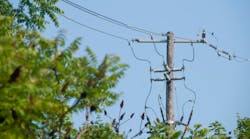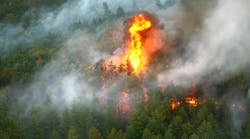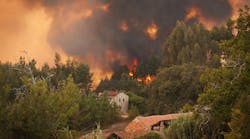Did you attempt to complete last month’s assignment? Were you successful? If so, congratulations. I think you will find it phenomenally useful. Thanks will be graciously received and contributions to my retirement fund will be heartily acknowledged.
Oh, my foot my foot my foot
Unfortunately, there may be a good number who found you can’t get there from here. I suspect the reason is that for convenience and simplicity, you do your costing by the mile. So how are you going to assess the difference in maintenance costs between cutting and herbicides? You may have found yourself searching for a means to determine which specific miles you maintain with cutting are comparable to the specific miles maintained via herbicide applications. You may have found you do not have a means of arriving at an accurate comparison between the treatment options. That was the sacrifice in choosing simplicity.
Between a rock and a hard place
So what do you do now? Unless you’re willing to invest a considerable amount into research to find comparable miles or change the units you use, ‘just forget about it.' Tell your VP and the public you can’t provide a cost comparison between cutting and herbicides. Of course, you can reassure them that everybody knows that herbicides offer lower costs, as in ‘trust me.'
For those of you who are implementing a reporting system, or are willing to change what you have, you need a common measure of area between cutting and herbicide work that is based on the area worked. Miles and spans are not a measure of work.
Last month I provided a cost factor graph for various treatment options. At TransAlta we measured area cut in m2. The m2 were derived from width of area treated by length excluding any gaps that were 30m or more in length. So we had a cost per square meter for herbicide work, hand cutting, mowing and pruning. First the metric was based on actual work area not a distance measure irrespective of the work. Secondly, the work unit was consistent between various operations and thirdly, the work unit was small enough that major gaps could be excluded rather than being inadvertently included. There you have the basis for comparisons between maintenance options.
If you are in the United States and don’t use the metric system, learn. OK, you can use ft2 or yd2. You’ll be dealing with large numbers either way and that may shift the preference to yd2. The key is to have a unit size that allows for exclusions. An acre won’t do because there will be too many that do not require treatment in their entirety.
Are you collecting the right data?
What you measure and how you measure it matters. Making the wrong choice will limit insight into your program and limit the effectiveness of its management.
Without careful consideration of the data you need, you will not be able to withstand intense scrutiny of concerned landowners, environmental groups or the regulatory process and your program will be revealed to be limping along on a questionable foundation. Take the planning and design time upfront so that you don’t have to subsequently arrive at the realization that you shot yourself in the foot.


